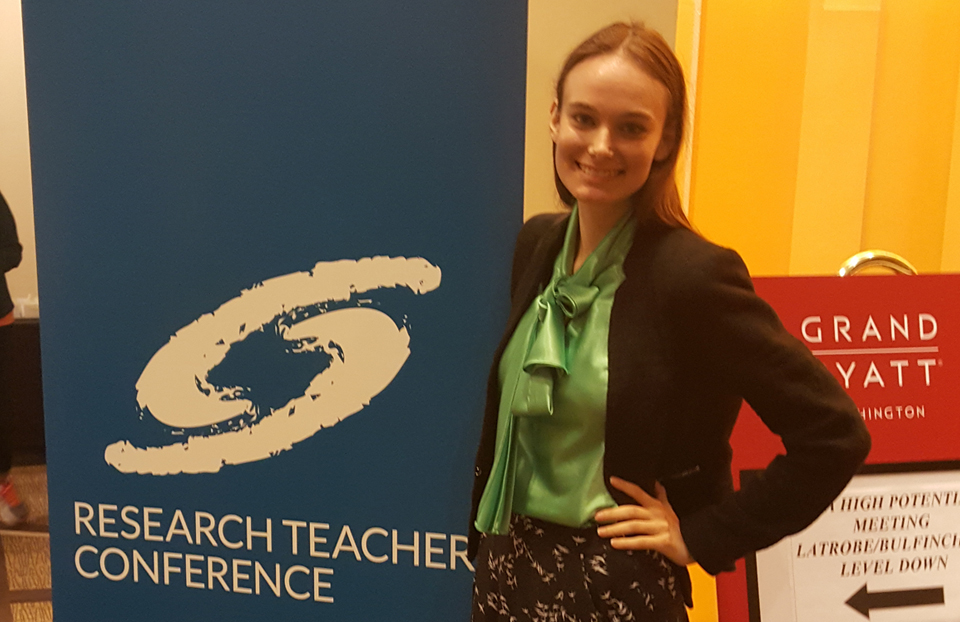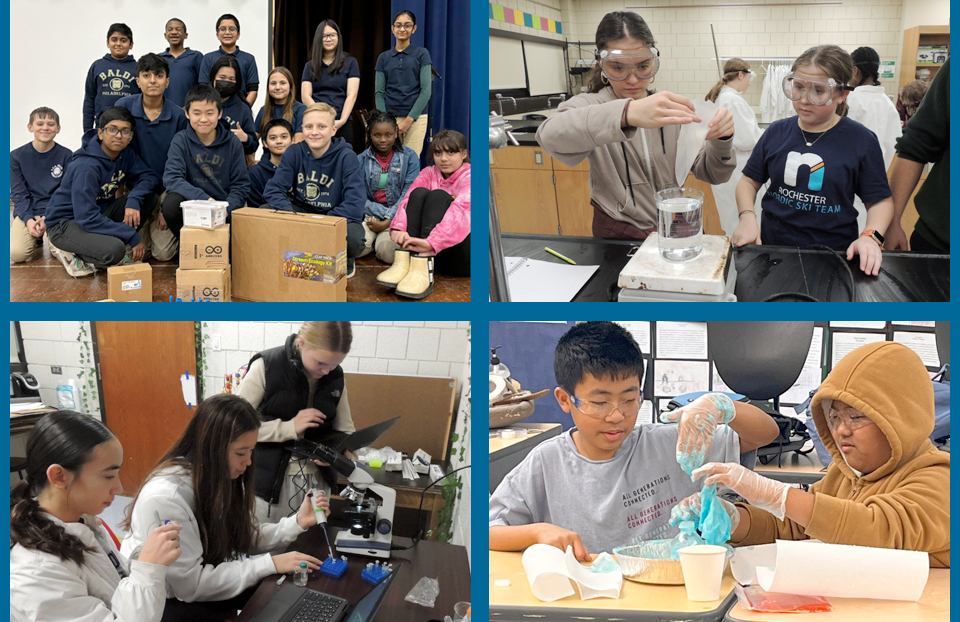Mary Fish and her zebrafish
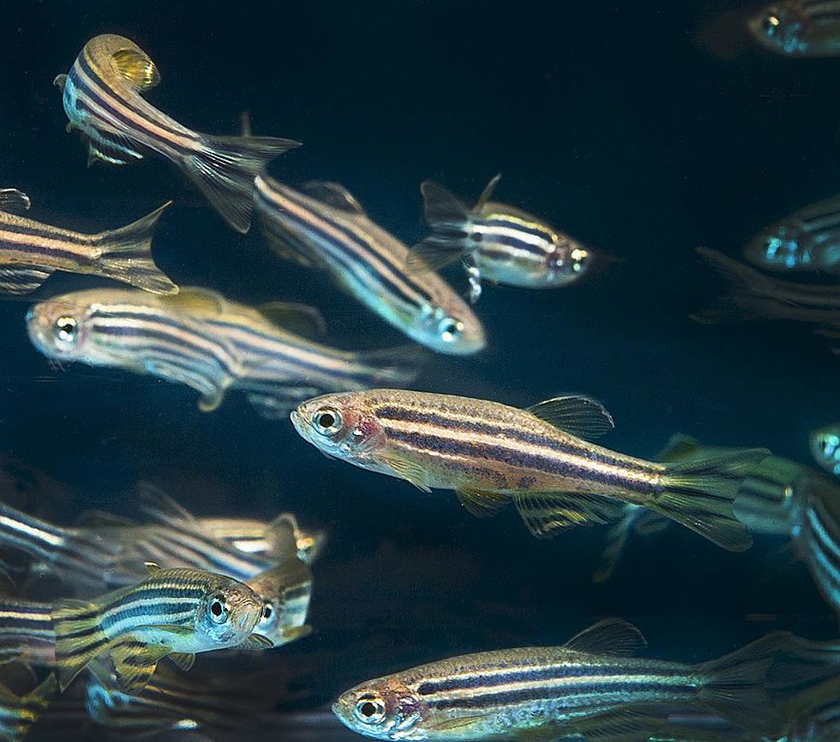
After an article about Mary Fish, a teacher at Spanish River High School in Boca Raton, Florida, was published in the Palm Beach Post, she received an interesting proposal from a local neuroscientist. EricDuboué, an assistant professor of neuroscience, who works with zebrafish at Florida Atlantic University, was intrigued by Mary’s work and contacted her. Eric wanted to see if Mary, who also works with zebrafish in her classroom, might be interested in a research partnership. Eric eventually added her as a collaborator in his National Science Foundation (NSF) grant application to create curriculum for high school students focused on the neurobiology and behavior of zebrafish.
“We’re still waiting to see if his NSF grant was accepted,” Mary said. “It’s a million dollar grant. I’m really excited about this development!”
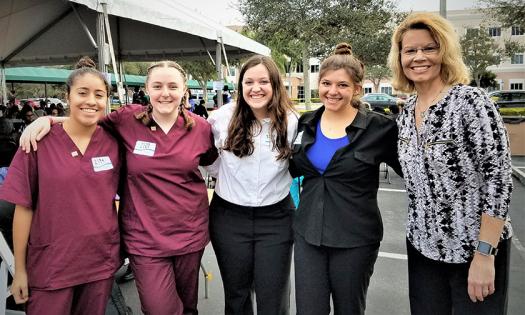
Mary was one of six teachers who received the Society for Science & the Public’s STEM Research Grant during the Fall 2017 cycle. One of the goals of the grant is to expand teachers’ capabilities and opportunities — like enabling Mary to get in touch with folks like Eric.
Eric even visited her students, bringing several of his lab’s fish along. “He had my students enraptured,” Mary said. “He explained how fish are good models for studying behavior and stress responses.”
Mary used the funds to construct a zebrafish recirculation system. She purchased a shelving system, PVC tubes, valves, emitters, vinyl tubes, aquarium tanks, and filters. She wanted her students to be able to work on individual experiments at the same time. Her students used the system to breed and grow different types of zebrafish in order to perform genetic screens.
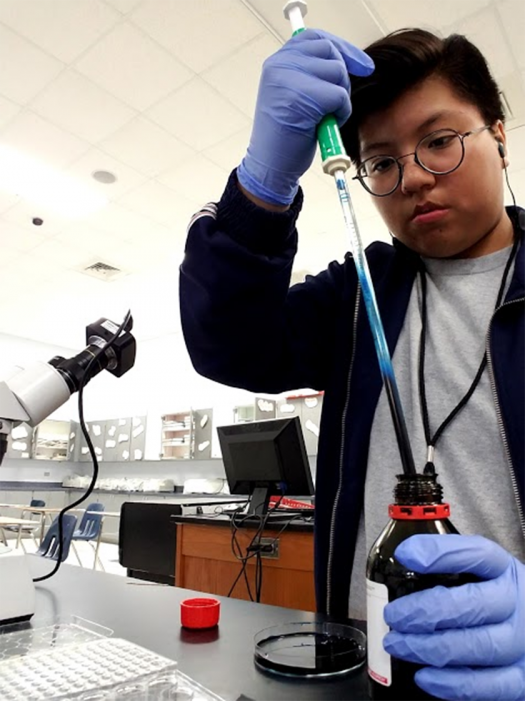
“These systems expanded the capabilities of my third year biotech students, and enabled them to do research using model organisms,” Mary said.
But why zebrafish? After working with bacteria and plants, Mary wanted her students to have the opportunity to work with a vertebrate. “My name is Fish, so that started it,” she laughed. “I’ve always had fish in my classroom. It draws the kids in like a magnet.” It’s become more common to use this model system in biological research, especially due to the convenient research advantage of a nearly transparent larvae and similarities to human genetic structure.
Since receiving the grants, already 15 students have conducted research projects using the fish and many of them plan to compete in the district’s science fair. One student performed zebrafish fin regeneration. Another tested if changing the color of the light entering the tank, or the lack of light, would affect the melanophores, specialized cells, in the skin of a leopard zebrafish.
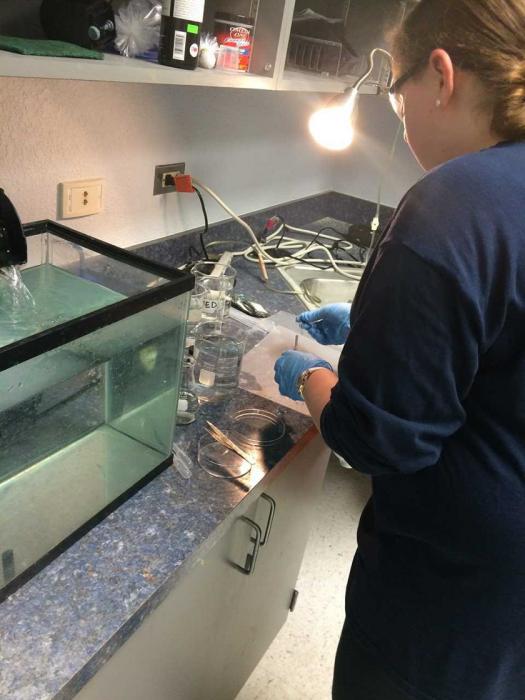
Maia, a junior, used a special protocol to stain the cartilage of zebrafish larvae in order to analyze their development. “Maia is interested in continuing her work in her senior year,” Mary said. “She’ll compete in our District Science and Engineering Fair in the fall.”
Mary has also recently connected with Noldus, a technology company that makes software that can track and measure the activity of zebrafish at early stages of development. “It’s a really neat program that allows you to set parameters and collect data that can be exported to a spreadsheet program for analysis,” she explained. “I hope to use this software next year.”
Next year, Mary also plans to extend the school’s marine science classes by using a coral growth system.
Eventually, Mary hopes to have a dedicated class for research projects. “Our biotechnology curriculum is full of great laboratory experiences, but a small subset of students are really interested in spending a whole semester in one class just performing their own research,” she said. “Our curriculum doesn’t have room for that. So I want to add more equipment to get our school to that point.”
